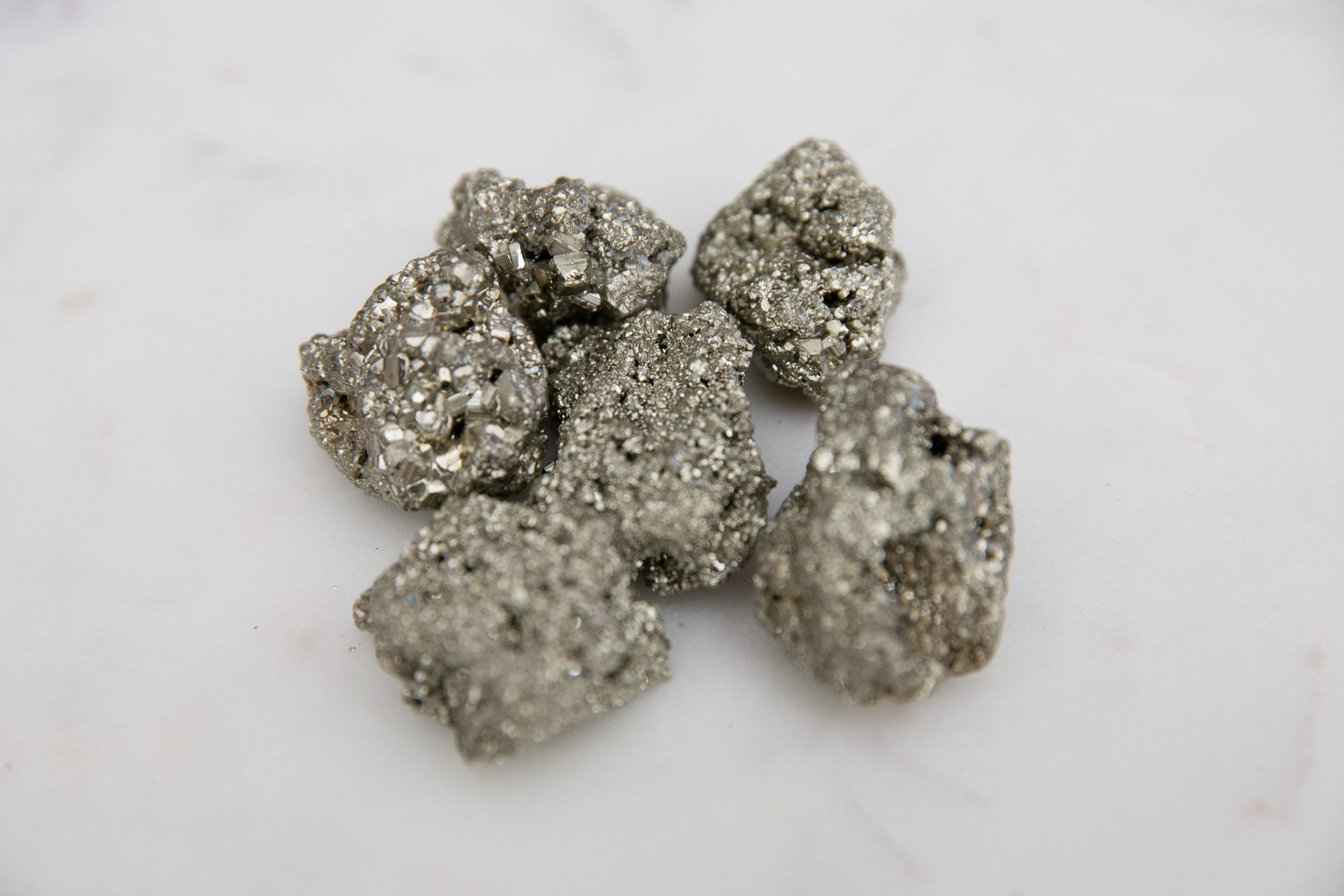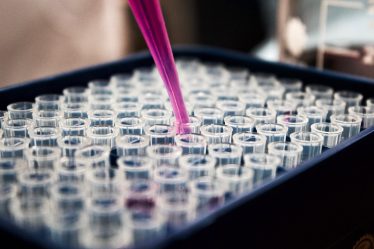
Welcome to this comprehensive guide on sulfides! In this blog post, we will dive into the world of sulfides with the help of our tutors, helping you understand their structure, formation, and importance in chemistry. So, let’s kickstart your journey into the intriguing world of sulfides.
If you’re seeking a chemistry tutor, Meet’n’learn’s got you covered. Their team of knowledgeable teachers can assist you in excelling at the subject. Visit meet’n’learn to discover the ideal tutor for your needs.
Understanding Sulfides: An Introduction
Sulfides represent a significant category within the vast realm of chemistry. These are inorganic compounds where sulfur is combined with one or more elements, forming a distinct group known as the ‘sulfide mineral group’ in geology. However, sulfides cover an even broader scope in chemistry, including organic compounds that contain sulfur.
The crucial component of a sulfide is the sulfide ion (S2-), which comprises a sulfur atom bonded to another element. The other elements that bond with sulfur to create a sulfide can be metals, semimetals, or even nonmetals. Such diversity in bonding potential places sulfides at the heart of numerous chemical reactions and natural processes, making them an important topic for chemistry students.
Need help with the covalent bond? Check out our blog post on “Covalent Bond: Definition, Formation, and Types with Examples”.
The Structure and Formation of Sulfides
Sulfides form when sulfur combines with another element. The chemical process that leads to the creation of sulfide is called a redox reaction, which involves a transfer of electrons. This is crucial to understand as redox reactions are fundamental to many chemical and biological processes.
Let’s consider an example: the formation of iron sulfide. This occurs when iron (Fe) and sulfur (S) react together under high heat. The resulting reaction, represented as Fe + S → FeS, leads to the formation of iron sulfide, a common sulfide mineral. In the redox reaction, sulfur gains electrons from iron, transforming into a sulfide ion, and iron loses electrons, becoming a cation.
While this is a simplistic example, it provides insight into the mechanisms involved in sulfide formation. Each sulfide has its unique structural characteristics depending on the elements involved. The sulfide ion (S2-) forms the basis of the structure, with other elements positioning themselves in a way that balances out the charges and creates a stable compound.
In more complex sulfides, such as those involving nonmetals or semimetals, the structures can become more intricate due to the different bonding behaviors of these elements. However, the fundamental principle remains the same: sulfides form when sulfur combines with another element in a redox reaction, resulting in a compound that exhibits unique chemical and physical properties.
Are you struggling with mass fraction? Our blog post “Mastering Mass Fraction: A Comprehensive Guide to Chemistry Concepts, Definitions, and Examples” is a great online resource.
The Chemical Equations Behind Sulfide Formation
Understanding the formation of sulfides is best illustrated by delving into the chemical equations that represent these reactions. Take, for example, the reaction between hydrogen and sulfur, which forms hydrogen sulfide:
H2 + S → H2S
This equation shows that when hydrogen (H2) and sulfur (S) combine, they form hydrogen sulfide (H2S), a colorless, toxic gas.
Another important reaction to consider is the creation of zinc sulfide:
Zn + S → ZnS
In this chemical equation, zinc (Zn) reacts with sulfur (S) to form zinc sulfide (ZnS), an important compound used in luminescent materials, x-ray screens, and pigments.
Understanding that these chemical reactions, specifically redox reactions, form the backbone of sulfide formation is crucial. These reactions represent the intricate chemical dance that forms a variety of sulfides, each with unique properties and uses.
Need help with molar mass? Our blog post “Mastering Molar Mass: A Comprehensive Tutoring Guide for High School Students” is a great online resource.
Exploring Different Types of Sulfides
Sulfides come in various forms, depending on the elements they are bonded with. Among the most common types of sulfides are hydrogen sulfide, metal sulfides, and organic sulfides.
- Hydrogen sulfide (H2S): A toxic gas with a foul odor reminiscent of rotten eggs. It occurs naturally in crude petroleum and natural gas and can also be produced by the bacterial breakdown of organic matter.
- Metal sulfides: Include compounds like iron sulfide (FeS), zinc sulfide (ZnS), and lead(II) sulfide (PbS). These are formed when a metal reacts with sulfur, are commonly found in nature, and are extensively used in various industrial processes.
- Organic sulfides: These are compounds in which sulfur is bonded to carbon. Examples include dimethyl sulfide (CH3SCH3), which contributes to the characteristic smell of the sea, and ethanethiol (C2H5SH), a compound with a strong odor often added to natural gas.
- Polysulfides: These are a class of compounds with chains of sulfur atoms. Sodium polysulfides (Na2Sx) are used in various industries, such as leather processing and as a part of some rubber products.
Struggling with biology topics? Explore our extensive collection of biology educational blog posts designed to simplify complex concepts for you. Whether it’s photosynthesis, the intricacies of green algae, understanding bacteria and viruses, or delving into the fascinating world of genetics, our resources have got you covered. Expand your knowledge and enhance your learning journey with us today.
Common Properties of Various Sulfides
Regardless of the specific form they take, all sulfides share certain characteristics.
- Insolubility in Water: Many sulfides, especially metal sulfides, are insoluble in water. This is a crucial property used in industrial applications, particularly in the extraction of metals.
- Acidic Properties: Some sulfides, such as hydrogen sulfide, show acidic properties when in an aqueous solution. Hydrogen sulfide reacts with water to form hydronium and hydrosulfide ions, as shown in the equation: H2S + H2O → H3O+ + HS–.
- Variability in Physical States: Sulfides can exist in various physical states. Hydrogen sulfide, for example, is a gas at room temperature, whereas most metal sulfides are solid.
- Volatile Nature: Organic sulfides, such as dimethyl sulfide, are often volatile and known for their distinctive odors.
- Reactivity: Polysulfides, characterized by chains of sulfur atoms, often exhibit high reactivity due to the presence of sulfur-sulfur bonds. This property makes them useful in various industrial processes.
- Color: Many sulfides, particularly metal sulfides, are colorful. For example, cinnabar, a mercury sulfide, is bright red, while chalcopyrite, a copper iron sulfide, is brassy yellow.
- Conductivity: Many metal sulfides, like copper(I) sulfide and iron(II) sulfide, are semiconductors, demonstrating significant electrical conductivity.
The wide array of sulfides and their unique properties make them an intriguing class of compounds within the field of chemistry.
Having difficulty with viscosity? Our blog post on “Viscosity: An In-Depth Chemistry Learning Guide Prepared by Tutors” is a helpful resource.
The Role and Importance of Sulfides in Our World
Sulfides play significant roles in both natural processes and various industries, serving as vital elements in our daily lives. In nature, they are involved in biological processes, geological formations, and even contributing to atmospheric chemistry.
- Hydrogen sulfide (H2S): Known for its rotten egg smell, this compound plays essential roles in biological processes. Some bacteria even use it for respiration instead of oxygen.
- Metal sulfides: Compounds such as pyrite (FeS2) and galena (PbS) are crucial in geology as they serve as ores from which valuable metals like iron and lead are extracted.
- Zinc sulfide (ZnS) and Organic sulfides: Zinc sulfide is used in industry for making luminescent materials and x-ray screens, while organic sulfides are added to natural gas to enhance its smell for safety reasons.
- Polysulfides: These compounds find applications in various industrial processes, such as in leather processing and the production of certain types of rubber products.
Do you have trouble understanding hydroxides? Our blog post “Understanding Hydroxides: An Essential Guide for High School Chemistry Students” is a great online resource.
Hands-On Learning: A Simple Experiment with Sulfides
Experiential learning can greatly enhance understanding. Below is a simple experiment involving sulfides that students can perform under appropriate supervision. This experiment demonstrates the formation of a metal sulfide—specifically, iron(II) sulfide—through the reaction of iron and sulfur.
Materials:
- Fine iron filings
- Sulfur powder
- Test tube
- Heat source (Bunsen burner)
- Test tube holder
- Safety goggles and gloves
Procedure:
- Firstly, ensure safety precautions are in place. Put on your safety goggles and gloves.
- Mix equal parts of fine iron filings and sulfur powder in a test tube.
- Hold the test tube with a test tube holder and heat it gently over a Bunsen burner.
- Observe the reaction taking place. The mixture will start to glow and emit a characteristic ‘rotten egg’ smell—that’s hydrogen sulfide gas being released.
- Allow the test tube to cool before handling it directly. Iron (II) sulfide is the solid left behind, formed by the reaction of iron and sulfur when heated.
This experiment provides a hands-on understanding of how a metal sulfide is formed. Always conduct this experiment under appropriate adult supervision and follow all safety guidelines. Happy experimenting!
Are you struggling with determining the concentration of a solution? Our blog post “Step-by-step Guide on How to Calculate the Concentration of a Solution” can be a valuable online resource to assist you.
Maximizing Your Chemistry Education: The Role of Tutors
Understanding complex chemistry topics like sulfides can sometimes be challenging. This is where the role of a tutor becomes invaluable. Tutors provide personalized guidance, clarifying difficult concepts and tailoring the learning process to suit individual student needs. They can break down the intricacies of sulfides, aid in experiment understanding, and provide additional exercises to enhance comprehension. With a tutor, you can confidently and easily navigate the world of sulfides.
If you need a chemistry tutor, search for “chemistry tutor Glasgow” or “chemistry teacher Sheffield” on tutoring platforms, such as meet’n’learn for individualized help.
If group study suits you better, search “chemistry classes London” or “chemistry lessons Manchester” online to find local schools offering chemistry classes.
Harnessing the Power of the Internet: Useful Online Resources for Learning About Sulfides
The internet is a vast resource for chemistry education. Here are a few recommended online resources for learning about sulfides:
- Khan Academy: This platform offers comprehensive lectures on various chemistry topics, including inorganic chemistry and sulfides.
- Coursera: With courses from universities around the world, Coursera has an extensive selection of chemistry courses where sulfides are discussed in detail.
- Chemistry LibreTexts: This resource offers a wealth of freely available chemistry textbooks, including sections dedicated to sulfides.
- PhET Interactive Simulations: Run by the University of Colorado Boulder, PhET offers interactive simulations for science subjects, including chemistry. These can help visualize concepts related to sulfides.
- YouTube: Channels like Crash Course and Professor Dave Explains offer accessible chemistry content, including videos about sulfides.
By integrating these online resources with traditional learning and tutoring, you can gain a robust, multi-dimensional understanding of sulfides and their significance in chemistry.
Do you have trouble understanding halides? Our blog post “Understanding Halides: A Guide for Chemistry Students with Tutoring Insights” is a great online resource.
Wrapping Up: Conclusion
You’ve come a long way in your understanding of sulfides. You’ve discovered their types, learned about their structures and formations, and examined their unique properties. You’ve seen how these compounds appear in various forms, from hydrogen sulfide to metal, organic sulfides, and even polysulfides.
Applying theory to practice, you’ve conducted a hands-on experiment with sulfides, bringing the lessons to life. You’ve also explored how tutors can simplify complex chemistry topics and tapped into valuable online resources to expand your knowledge. With this solid foundation, you’re now ready to delve even deeper into the captivating world of chemistry.
If you’re seeking a chemistry tutor, Meet’n’learn’s got you covered. Their team of knowledgeable teachers can assist you in excelling at the subject. Visit meet’n’learn to discover the ideal tutor for your needs.
FAQs: Addressing Common Questions About Sulfides
1. What Are the Different Types of Sulfides?
There are several types of sulfides including hydrogen sulfide, metal sulfides like iron sulfide and zinc sulfide, organic sulfides like dimethyl sulfide, and polysulfides.
2. How Are Sulfides Formed?
Sulfides are typically formed when sulfur combines with a metal or a nonmetal. In nature, they can form through geological processes; in the lab, they can be synthesized through specific chemical reactions.
3. What Are Some Common Properties of Sulfides?
Sulfides often have a high melting point and can appear in different physical states, depending on the sulfide type. They also exhibit varied levels of reactivity.
4. Where Are Sulfides Used?
Sulfides have diverse applications. For instance, they are used in the production of rubber, in the petroleum industry, and the creation of batteries. They also occur naturally in the environment.
5. How Can Tutors Help in Understanding Sulfides?
Tutors can provide personalized guidance and simplify complex topics, helping students understand sulfides more effectively. They can aid in understanding experiments and provide additional learning materials.
6. What Online Resources Are Available for Learning About Sulfides?
Online platforms like Khan Academy, Coursera, Chemistry LibreTexts, and YouTube offer comprehensive resources for sulfide learning, from lectures and courses to interactive simulations and videos.


